Nico Hauff
Self-supervised Transfer Learning for Instance Segmentation through Physical Interaction
May 19, 2020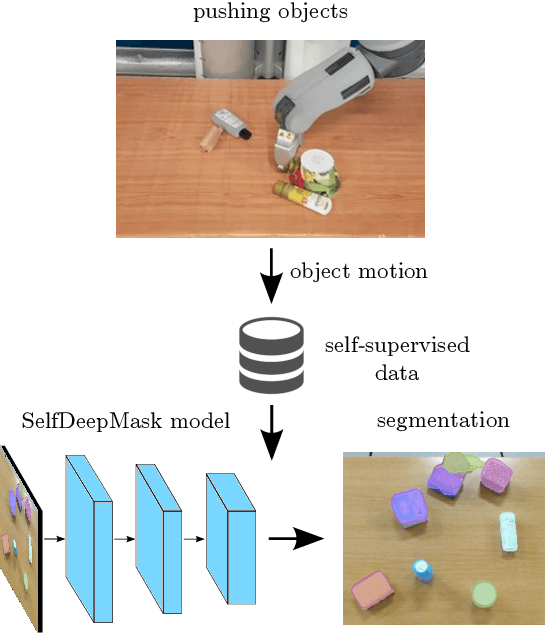

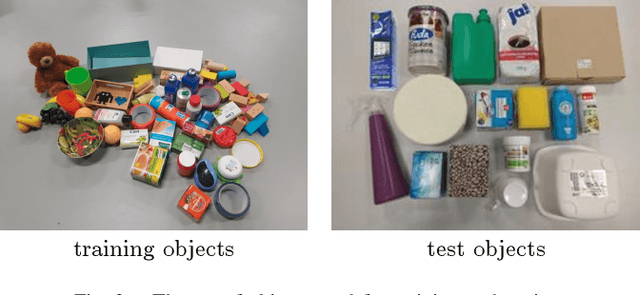
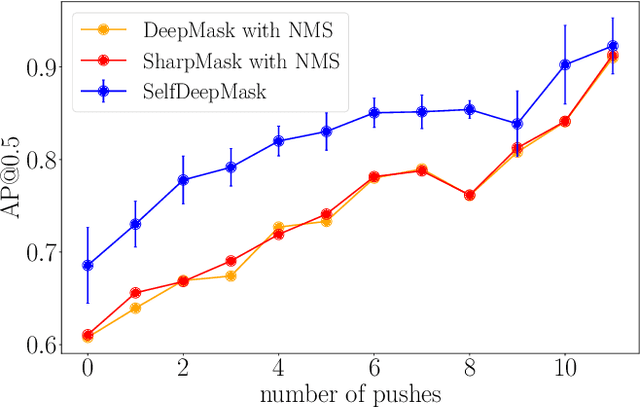
Abstract:Instance segmentation of unknown objects from images is regarded as relevant for several robot skills including grasping, tracking and object sorting. Recent results in computer vision have shown that large hand-labeled datasets enable high segmentation performance. To overcome the time-consuming process of manually labeling data for new environments, we present a transfer learning approach for robots that learn to segment objects by interacting with their environment in a self-supervised manner. Our robot pushes unknown objects on a table and uses information from optical flow to create training labels in the form of object masks. To achieve this, we fine-tune an existing DeepMask network for instance segmentation on the self-labeled training data acquired by the robot. We evaluate our trained network (SelfDeepMask) on a set of real images showing challenging and cluttered scenes with novel objects. Here, SelfDeepMask outperforms the DeepMask network trained on the COCO dataset by 9.5% in average precision. Furthermore, we combine our approach with recent approaches for training with noisy labels in order to better cope with induced label noise.
Learning to Singulate Objects using a Push Proposal Network
Feb 05, 2018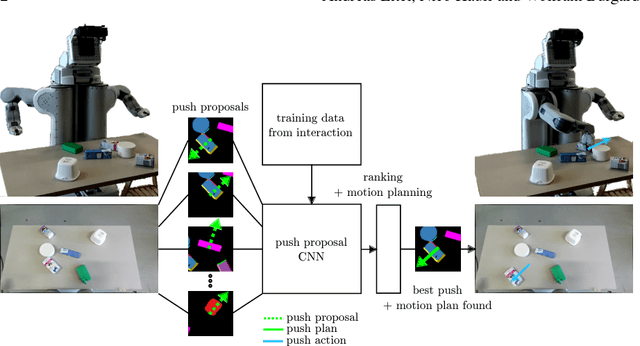

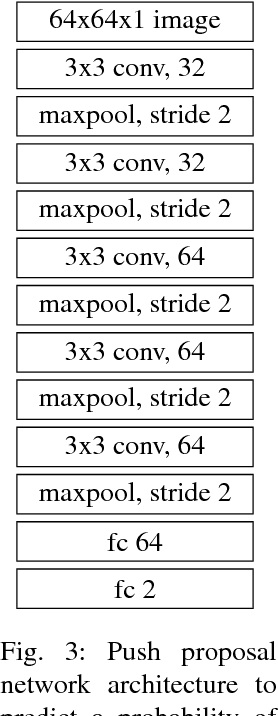
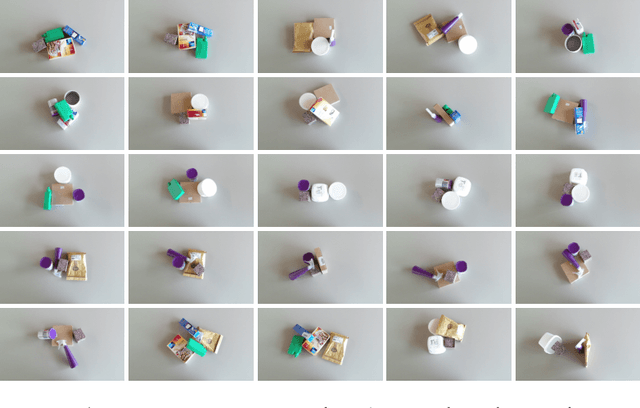
Abstract:Learning to act in unstructured environments, such as cluttered piles of objects, poses a substantial challenge for manipulation robots. We present a novel neural network-based approach that separates unknown objects in clutter by selecting favourable push actions. Our network is trained from data collected through autonomous interaction of a PR2 robot with randomly organized tabletop scenes. The model is designed to propose meaningful push actions based on over-segmented RGB-D images. We evaluate our approach by singulating up to 8 unknown objects in clutter. We demonstrate that our method enables the robot to perform the task with a high success rate and a low number of required push actions. Our results based on real-world experiments show that our network is able to generalize to novel objects of various sizes and shapes, as well as to arbitrary object configurations. Videos of our experiments can be viewed at http://robotpush.cs.uni-freiburg.de
 Add to Chrome
Add to Chrome Add to Firefox
Add to Firefox Add to Edge
Add to Edge